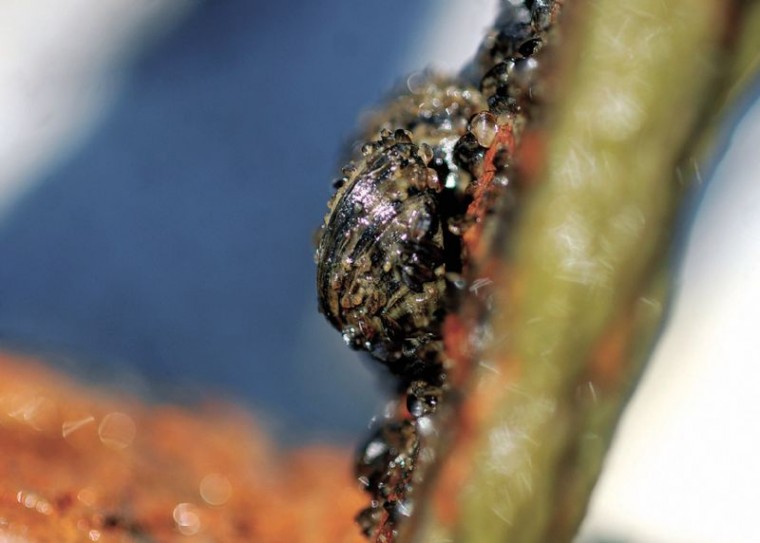
Officials awaiting approval of plan to kill invasive mussels at
San Justo
There is a
”
99 percent probability
”
that the San Justo Reservoir off Union Road will be closed for
another year as local water officials await governmental approval
of proposed eradication options for the invasive zebra mussel.
Officials awaiting approval of plan to kill invasive mussels at San Justo
There is a “99 percent probability” that the San Justo Reservoir off Union Road will be closed for another year as local water officials await governmental approval of proposed eradication options for the invasive zebra mussel.
Harry Blohm, a San Benito County Water District consultant and program manager for the eradication and control of the mussel, recently called the continued closure of the popular fishing and boating destination for another year “the highest probability.” The reservoir has been closed since the fingernail-sized mussels were discovered there in January 2008.
“It still has to be coordinated with all of the agencies involved, but it is most likely a 99 percent probability that it will stay closed,” he said. “But that is not the sole call of the water district.”
Zebra mussels, which originated in Europe, were found in the eastern United States in the 1980s and in the Western U.S. in 2007. The freshwater creatures can be disastrous to water systems because they produce toxins that kill local, native organisms. They also produce so quickly and in such great numbers that they can clog drinking water or agricultural irrigation delivery systems.
A zebra mussel infestation in the Great Lakes region in the 1990s had an estimated $5 billion negative economic impact. California water officials want to stop the mussel’s spread at San Justo Reservoir so it doesn’t migrate to other waterways.
Local water officials locked the gates at San Justo more than a year-and-a-half ago to make sure that boaters or fishermen did not inadvertently transport the mussels to other waterways.
“There is a concern about managing the potential mussel problem in the distribution system,” Blohm said. “Everything we’re doing is to try to protect our users – not recreational users, but water users.”
The county water district is working with the United States Bureau of Reclamation and the California Department of Fish and Game to come up with a plan to rid the reservoir of the mussels. One idea proposes treating the reservoir with potash and chlorine after yearly water deliveries draw down the basin. Potash, or potassium chloride, is a type of salt that disrupts mussels’ ability to filter feed. It causes the mussels to open up, and the chlorine would kill them.
Officials will also study whether the mussels could be killed simply by drawing down the reservoir.
However, that option is not fool-proof because there is always some water left in San Justo after all of the annual water deliveries are made, meaning enough mussels could survive to re-infest the waterway once it begins to fill back up.
The water district is still awaiting environmental clearance to move forward with an eradication plan. Earlier this summer, local officials said that if treatment did not begin this fall it would have to wait for next year because the reservoir will begin to fill up again during the winter and spring.
“There will be no treatment this fall,” Blohm said. “We knew it was going to be very tight to get all of the permits in place. We’re cooperating with the Bureau of Reclamation to obtain the permits to dose the reservoir with some sort of molluskicide to eradicate them, but there needs to be some tests performed. Those will be done this fall with the bureau in the lead to determine the effectiveness of the approach we hope to follow.”
Next year, the approved course of treatment will take place after agricultural water deliveries are completed in the fall.
“It will be coordinated around growers’ needs and the water year so we will not in any way interfere with water users’ needs,” Blohm said, noting that eradication tests may be conducted this October or November. “Nobody’s giving up,” he added. “We’re working hard at this.”









